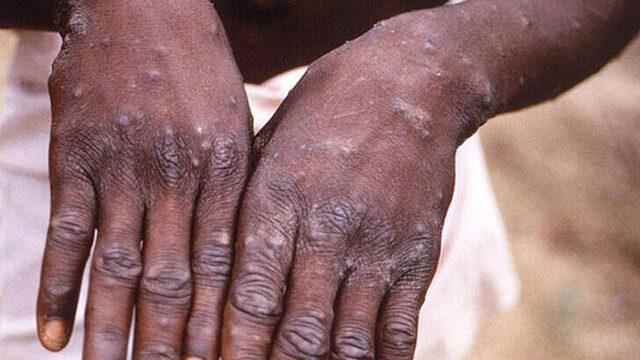There is a panic in the world after the coronavirus, monkeypox disease. Monkey pox, known as one of the rare diseases caused by an endemic virus, was also seen in Mexico. WHO, which has confirmed 80 cases of monkeypox so far, is investigating 50 cases. Infectious Diseases Specialist Assoc. Dr. Important statements came from Nafiz Koçak. Assoc. Dr. Koçak, “Worldwide population under 42 is vulnerable to infection due to discontinuation of smallpox vaccination programs” he said.
“IF THEY WANT TO BE PROTECTED FROM THIS VIRUS, TAKE MASKS”
Making suggestions to those who want to be protected from monkey pox, Assoc. Dr. Koçak said, “It is not known how deadly the virus found at the moment is. However, let them take the same precautions as we were protected from the coronavirus. If they want to be protected from this virus, they should wear masks,” he said.

Infectious Diseases Specialist Assoc. Dr. Nafiz Kocak said that it is usually a mild disease and that it heals in a few weeks without treatment. Assoc. Dr. Koçak said, “Monkey pox disease is seen in some animals, including humans; It is an infectious disease caused by the monkeypox virus. The Congo type of the virus, which has two strains, can be fatal in 10 percent, while the mortality rate of the West African strain confirmed in the UK epidemic is about 1 percent. In the last epidemic, no deaths have been reported yet,” he said.
ATTENTION TO THESE SYMPTOMS!
Describing the first signs of monkeypox, which has so far been rare in the tropical rain forests of Central and West Africa, Assoc. Dr. Koçak said, “Fever, headache, swelling in the neck, back pain, muscle pain and weakness. In more severe cases, a rash similar to that seen in chickenpox and smallpox may develop, usually on the face and genitals. Those infected with monkeypox usually begin to show symptoms 4 to 20 days after infection. There are two different genetic groups, Central and West African. “The Central African monkeypox virus in humans is more severe and has a higher mortality rate than the West African virus,” he said.
Assoc. Dr. Koçak said, “This virus can be transmitted from person to person through contact with things such as lesions, body fluids, respiratory droplets and bedding, skin abrasions, respiratory tract, eyes, nose or mouth. It can also be transmitted through direct contact during sexual intercourse. It can also be spread through infected animals such as monkeys, rats and squirrels. Eating undercooked meat from infected animals is also a possible risk factor. It can also be transmitted from a pregnant mother to her child and fetus through the placenta. The incubation period (range from infection to onset of symptoms) is usually 6 to 13 days but it can vary between 4 and 20 days,” he explained.
“MORTALITY RATE OF LITTLE CHILDREN IS HIGH”
Stating that the course of the infection is divided into two periods, Assoc. Dr. Nafiz Koçak said, “Fever, intense headache, swelling in the lymph nodes, back and muscle pains and severe weakness symptoms are seen in the first 5 days. Swelling of the lymph nodes is a distinguishing feature of monkeypox virus cases compared to other similar diseases (chickenpox, measles, smallpox). The skin rash, which begins in the second period, usually begins 1-3 days after the onset of fever. The rash is on the face rather than the trunk. Rashes usually start on the face (95 percent) and affect the palms and soles (75 percent). In addition, oral mucosa (70%), genital area (30%), and conjunctiva and cornea (20%) are also affected. Severe cases of Monkeypox are more common among children. “Monkeypox virus case fatality rates range from 0 to 11 percent in the general population and are higher among young children.”
Assoc. Dr. Nafiz Kocak listed the measures that can be taken to prevent infection with Monkeypox virus as follows:
“Contact with animals that may harbor the virus should be avoided (including animals that are sick or found dead in areas where monkeypox occurs). Contact with any material that has come into contact with a sick animal should be avoided. Infected patients should be isolated from others who may be at risk of infection. Good hand hygiene should be practiced after contact with infected animals or people. Washing with soap and water or using an alcohol-based hand sanitizer is sufficient. Personal protective equipment (PPE) should be used when in contact with patients. Mask should be worn.”
Assoc. Dr. Koçak said, “Considering accuracy and sensitivity in diagnosis; polymerase chain reaction (PCR) is the preferred laboratory test. A biopsy is an option when available. Antigen and antibody detection methods do not provide monkeypox specific confirmation. Therefore, blood testing and antigen detection methods are not recommended for diagnosis or case study when resources are limited.”
THIS AGE GROUP IS DANGER
Emphasizing that there is no specific proven treatment, Assoc. Dr. Nafiz Kocak, smallpox vaccine, antivirals and intravenous immune globulin (VIG) obtained from people who have had smallpox can be used to keep the monkeypox epidemic under control. At this time, the original (first generation) smallpox vaccines are no longer available to the public. Populations under 42 years of age worldwide are vulnerable to infection due to the discontinuation of smallpox vaccination programs. Because monkeypox is closely related to the virus that causes smallpox, smallpox vaccines can be used as a preventative measure. In case of catching the disease, results can be obtained from the application even within the first 5 days. Smallpox vaccine provides cross-protection against all smallpox viruses.
Source: DHA
